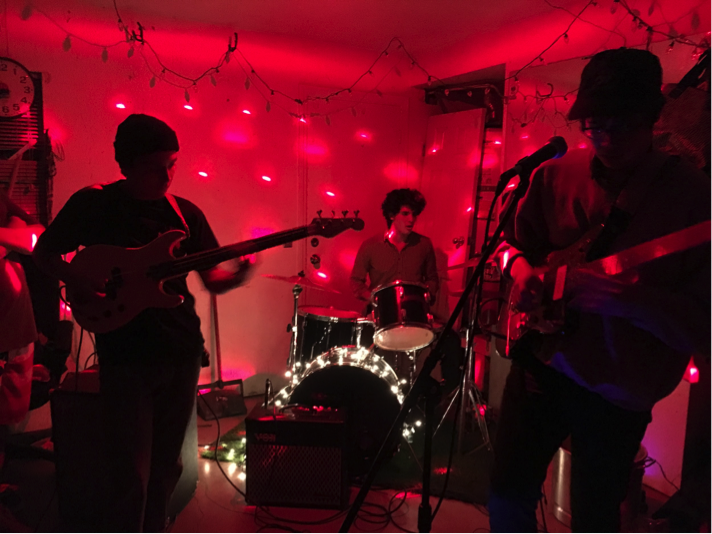By Angie Garcia
At the end of my junior year of high school in San Diego, my friend told me a local surf punk band she desperately had been wanting to see would be playing a house show, so we decided to check it out. Although I felt uneasy about being inside a stranger's home, we arrived at a welcoming and spirited crowd of people in the house.
Surf punk band Fake Tides play at the house show on Dec. 18, 2015.
Then we all crammed into a stuffy, closed garage and the band began to play. Colorful lights bounced all around the room and the sounds of the drums and bass boomed off the walls, creating an energetic atmosphere that quickly had all of us strangers dancing and moshing against each other.
I grew up listening to independent music, often referred to in short as indie. But until recently, I had never questioned how and when music should be categorized as indie. Then, an intriguing question popped out at me from a UC Santa Barbara music course description: “What does it mean for music to be independent?” The class was called Independent Music in America and I immediately knew I had to sign up for it.
The course takes a historical look at the underground music from the 1970s to the present in the United States. In seminar style, the class is led by David Novak from the Ethnomusicology Program and specifically explores the punk movement that began with bands such as Minor Threat, Black Flag, and Beat Happening and the genres that expanded out it.
From the very first lecture, professor Novak engendered a rich and intimate student-led discussion regarding what we could, or could not, define as independent music. For three hours each week, we shared our definitions of independent music through song clips, pictures, and anecdotes.
It was easy to tell that all of us discovered something new as we wrote down in our papers the names of artists, venues, shows, radio programs, etc. that each of us brought up. Many first learned about the impact of the Sex Pistols, CBGB, Riot Grrrl, its opponent the Sista Grrrl Riot, and more.
In a wide consensus, we agreed that unlike the 70s punk movement which had bands that were primarily led by white, heterosexual, middle-class men, the independent movement in our present day strives to serve as a platform for historically marginalized communities. We are now seeing more artists of color, especially in women and queer fronted bands such as with Kera and the Lesbians, Downtown Boys, and Las Robertas.
Yet, similar to the 70s, musicians today are categorized as independent if they are not managed by big, corporate record labels. Today’s independent artists also continue the tradition of working in the “do it yourself” fashion, like the bands at that first house show I attended.
From record production, to marketing, to touring, they manage themselves without the need for big money or exposure to wide audiences, in the way mainstream artists do. This Music Department course made me realize how many musicians play music for the simple pleasure of doing and sharing their art. As a writer, it reassured me that it is best to center my goals in my art rather than in fame and money.
Angie Garcia is a third-year English major and Education minor at UC Santa Barbara.



